As the warmth of summer fades, so too does your garden’s bounty, winding up with a last autumnal burst of squash and beans. But your late season garden need not be so limited, nor should spring be just for planting. Enter the hoop house, a microclimatic sanctuary from the changing of the seasons. If managed correctly, this low-tech proto-greenhouse can turn your fall, spring and sometimes even winter gardens into veritable cornucopias of backyard produce.
The structure of a hoop house is eminently simple: a series of metal or PVC poles, arched and secured to the ground or to a wooden base, covered tightly with a semi-transparent plastic film, and outfitted with a door (or two) on one end or both. The structure holds in heat, creating a microclimate in which plants can be grown outside their normal seasons.
A hoop house is not a greenhouse, but the distinction between these can be confusing. The defining characteristic of a hoop house, also called a high tunnel on a farm, is its inherently low-tech construction and its iconic half-moon shape reminiscent of a Quonset hut.
A greenhouse, on the other hand, is more complex, often made of solid plastic or glass panels, often temperature controlled, and usually more house-shaped, with a pitched or angled roof. Notably, a greenhouse is more labor intensive and expensive to erect than a hoop house and is intended to last far longer.
But though a hoop house is easier to erect than a greenhouse, it’s still a big undertaking, notes Heidi Feldman, an avid gardener and proud hoop house owner. The first one that she and her husband Curtis built “was a disaster,” she recalls. “It collapsed under the weight of the heavy snowfall that year.”
Round two, however, was a smashing success and the 16’ x 20’ hoop house still stands tall on their West Tisbury property today. The pieces were acquired through a barter with another Island gardener. (Heidi doesn’t remember the exact transaction, but suspects it involved a few vegetables). Aside from the occasional tear from a strong gust of wind, no major problems have occurred since the first collapse. The couple, co-owners of MV Sea Salt, have gone on to build much larger hoop structures to house and dehydrate their sea salt.
Marie Larsen, a retired school administrator who took up vegetable gardening to become more self-sufficient, has yet to have any structural issues with her hoop house. Hers is smaller than Heidi’s; a center beam adds extra support and the ends of her hoop house are wooden arches. The most important factor Marie considered when planning her hoop house was location; she chose a protected spot in her Chilmark yard that wouldn’t be exposed to much wind.
Lynne Irons, Marie’s gardening mentor and Vineyard Gazette garden columnist, agrees that wind is the primary foe of hoop houses. “My son and I have an ongoing argument about wind,” she says. “He says that if you leave the hoop house [doors] open, the wind will come in and lift it off. But I say if you leave them open, the wind is gonna knock it down.” She adds that if you build the hoop house in a protected area, wind won’t be an issue.
Rachael and Niko Ewing’s 20’ x 36’ behemoth in Edgartown requires more significant internal support. “Ours has crossbeams across the [interior of the] roof, which I highly recommend,” says Rachael, standing between her seven-plus-foot tall sun gold tomato plants. Their hoop house is constructed of both metal and wood elements, the latter partially salvaged from trees cut down to make space for the structure.
Once the structure is secure, the gardening can begin. And if you plan it all out, it never really needs to end. “I start planting out there in April and if I do it right I eat all year round,” says Heidi, though she admits that winter is sometimes difficult. “On those short days with little sunlight, no one wants to get out of bed, not even the plants.”
Heidi says that she has successfully cultivated both warm-weather crops like tomatillos, peppers and tomatoes and cool-weather crops like greens in her hoop house. She grows them all in raised beds built within the house. Some gardeners, including the Ewings, grow crops directly in the ground in a hoop house, as most farmers do in high tunnels. But many home gardeners with smaller hoop houses employ raised beds.
The key to getting the most out of the structure during the colder months, Heidi says, is layering on the warmth. Before planting greens and other spring crops, she will lay down a black plastic sheet to warm up the soil. In late fall and winter, she often covers her crops by arranging fabric row cover over mini-hoops, effectively creating a tunnel within a tunnel that keeps the ambient temperature significantly higher than outside. With this method, you can harvest greens judiciously all winter, especially if you've planted them in mid-fall to get a good headstart before winter.
All the gardeners agree that one of the biggest bonuses of a hoop house is the ability to grow a variety of greens, both for salads and cooking, in the shoulder seasons. Heidi appreciates bountiful and quick sprouting kale, especially when she doesn’t have to dig through the snow to get it. Lynne has become disillusioned with its virility, saying “Kale is a weed. I don’t even plant kale anymore.” Marie is a spinach fan; she got several harvests per plant from her hoop house brood. Along with more conventional greens, Rachael said that claytonia, also known as miner’s lettuce, is a bountiful and oft forgotten winter crop.
But a hoop house is not merely a season extender; it can also boost your peak harvest. At the height of summer, Marie’s hoop house is resplendent with bushy tomatoes, both for eating and for sauce. (Seed catalogues such as Johnny’s offer tomato varieties that perform best in hoop house or greenhouse conditions.) Rachael uses her hoop house not only for heat-hungry crops such as tomatoes and watermelon, but for frost-sensitive perennials like her pomegranate tree and lemon verbena.
Gardening in a hoop house is an intensive use of soil, so amendments are essential. “You have to pay attention to the soil,” says Rebecca, “The minute you take something out feed the soil.” She makes extensive use of wood chips, chicken manure and compost, as well as fish emulsion from her husband’s fishing trips. Keeping the soil healthy helps to control pest populations that can thrive in the warm environment of a hoop house. Certainly with the expanded window of growing that a hoop house offers there comes more opportunity for garden chaos and conundrums. But that’s really what gardening is all about – grabbing on to that chaotic, photosynthetic world of the plant and holding on for dear life. “Just start with a plan,” Marie recommends. “Then things might go crazy, but you at least have a solid base.”
Thomas Humphrey is a reporter for the Vineyard Gazette.
You Go High, I Go Low
For years now I’ve been gardening without the benefit of a hoop house, though I’m hoping to build one before too many moons. In the meantime, I have a collection of wire hoops left over from my farming days, and I use them liberally to make mini hoop-houses (aka low tunnels). I cover the hoops with plastic greenhouse film in late spring and tuck tomato seedlings and dahlia plants under them to harden the plants off before the soil warms up.
In spring I cover the hoops tightly with lightweight fabric row cover both to warm the environment for baby lettuce and other seedlings and to keep out the inevitable cabbage moths that devastate kale and bok choy for as long as I can. I use clothespins, binder clips, bricks, boards and anything else that will hold the fabric in place.
In early winter, I put one or two layers of row cover back over fall greens to keep them going for as long as possible. When we have less than 10 hours of daylight, they won’t really grow. But if I’ve started enough plants I can still harvest lightly through the winter. A DIY alternative to wire hoops is PVC pipe cut into various lengths. To keep the PVC hoops upright and stable, tuck them over short stakes in the ground or use them in container beds where the wood frame will help stabilize them.
— Susie Middleton
Sources
Wire hoops, fabric row covers of different weights, greenhouse film, metal pipe benders, and various types of clips are available from Johnny’s Seeds and many other online gardening sources. Note: Do not buy just any plastic from the hardware-store; greenhouse film will hold up much longer. Metal conduit pipe for bending into hoops, as well as PVC pipe, can be bought at Home Depot and other lumber and electrical supply stores.

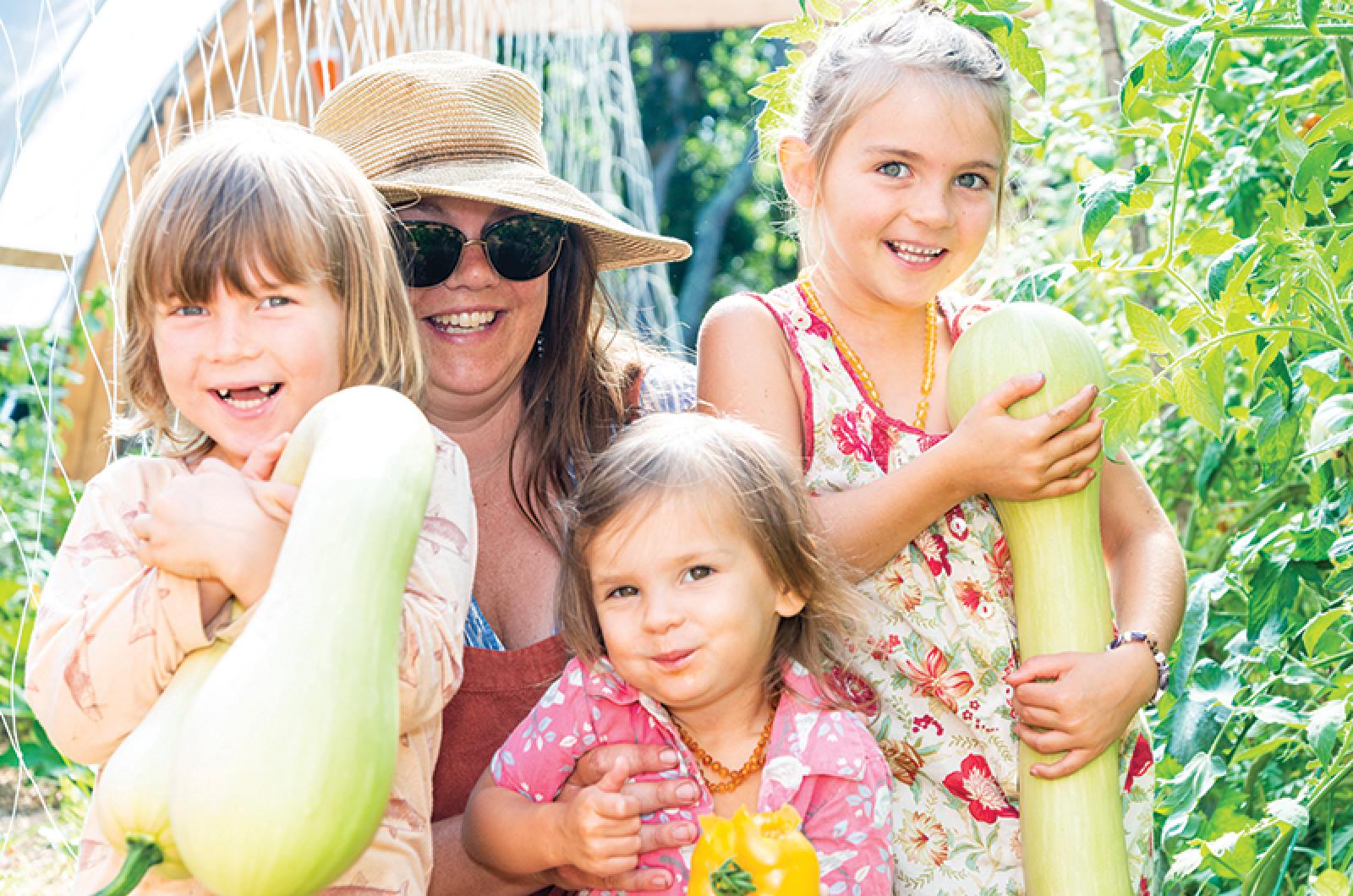



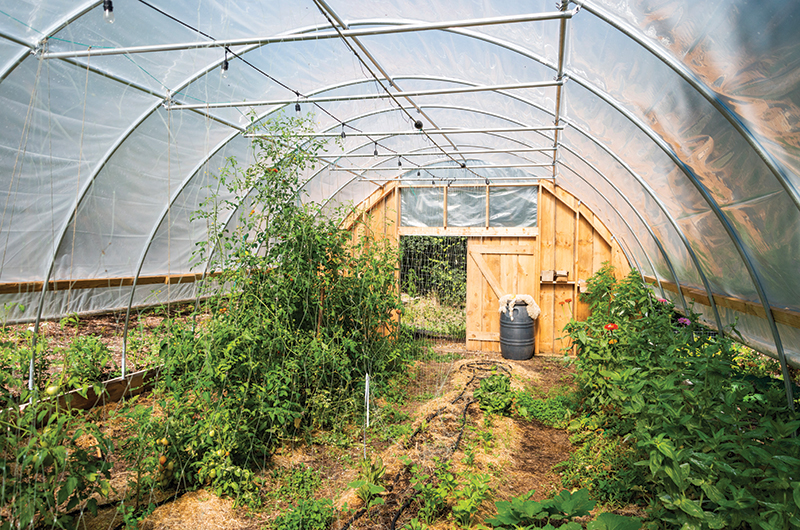
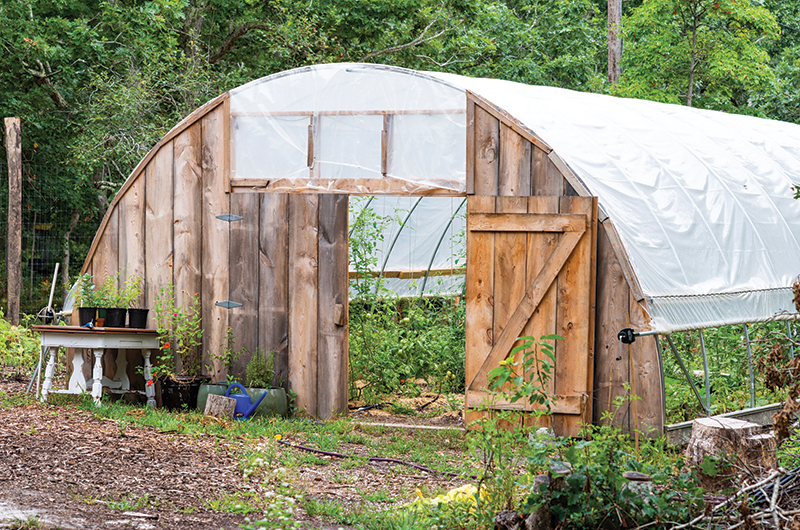
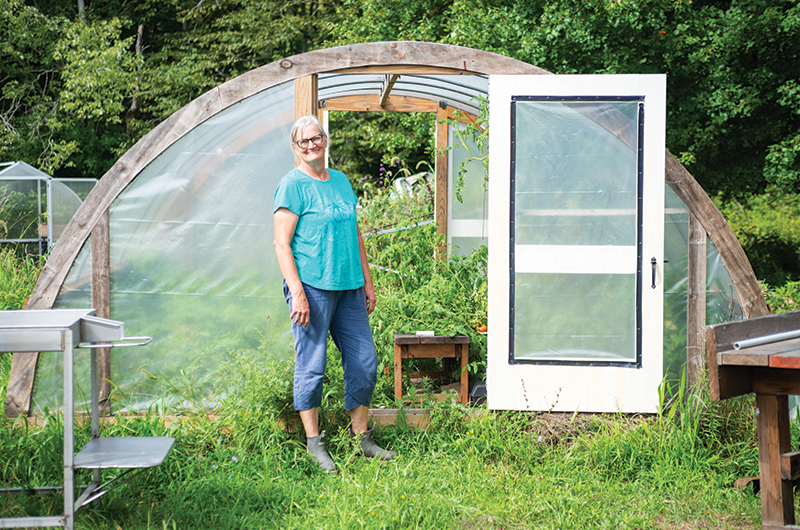
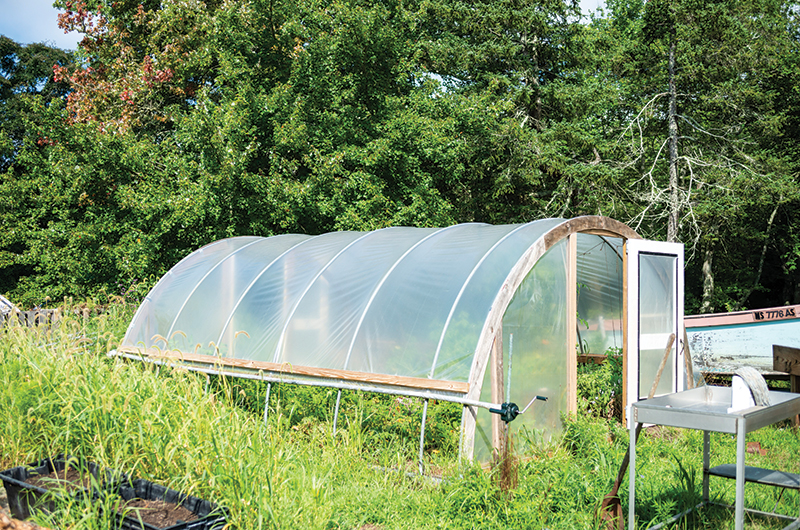

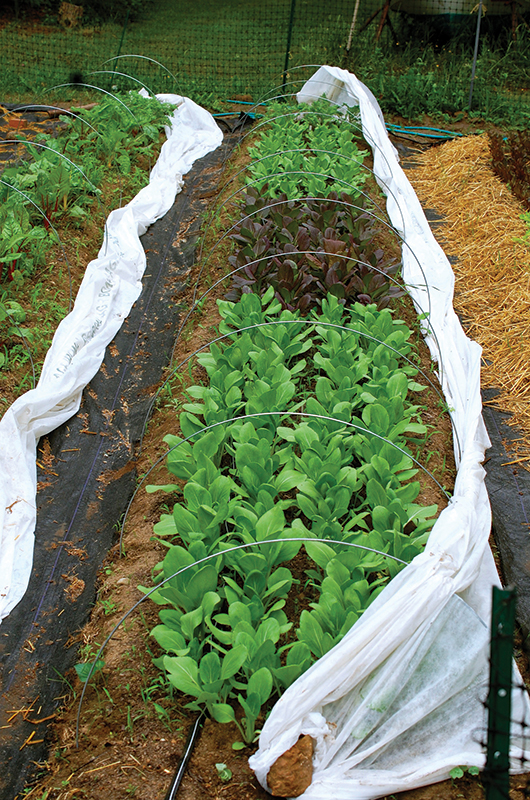






Comments